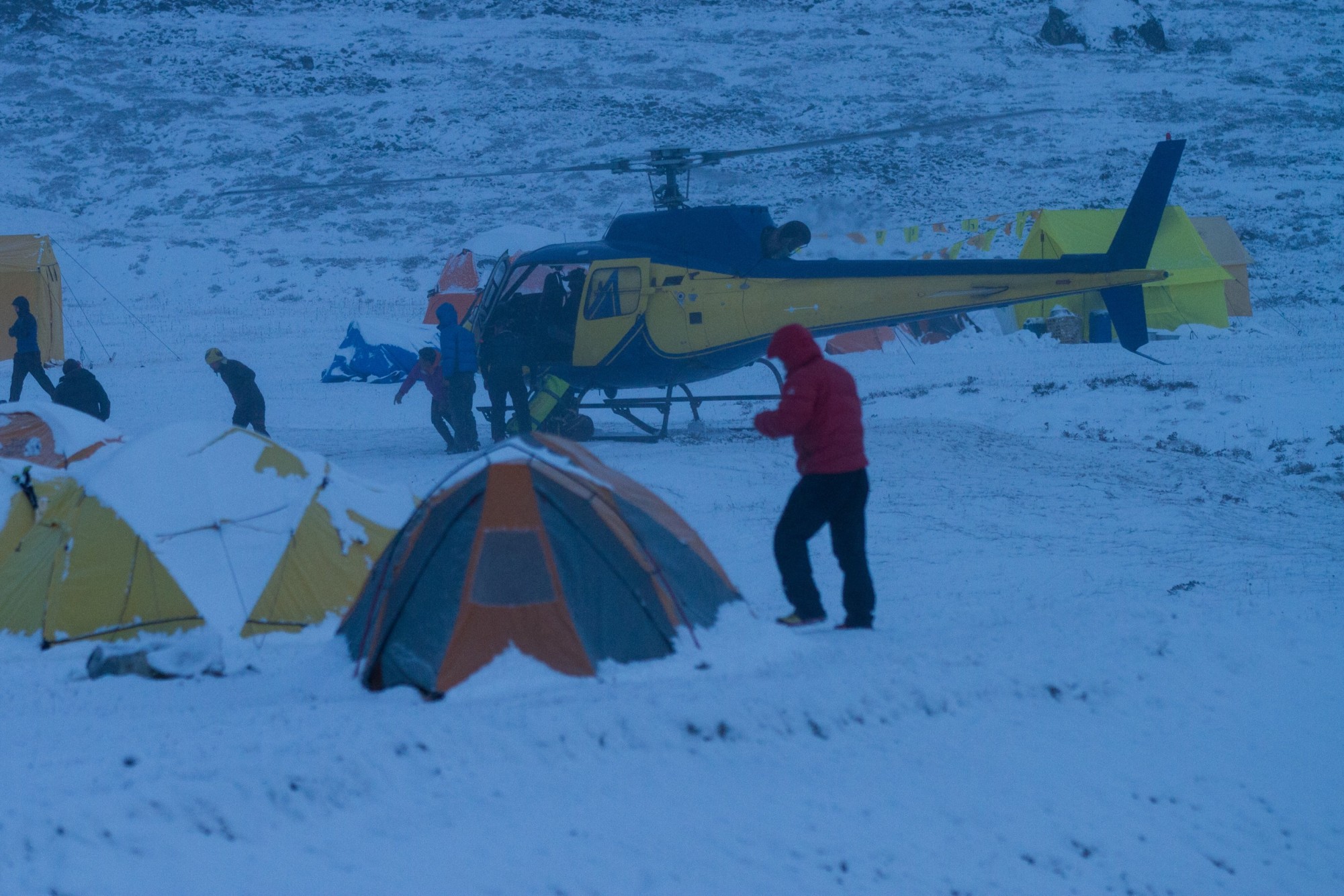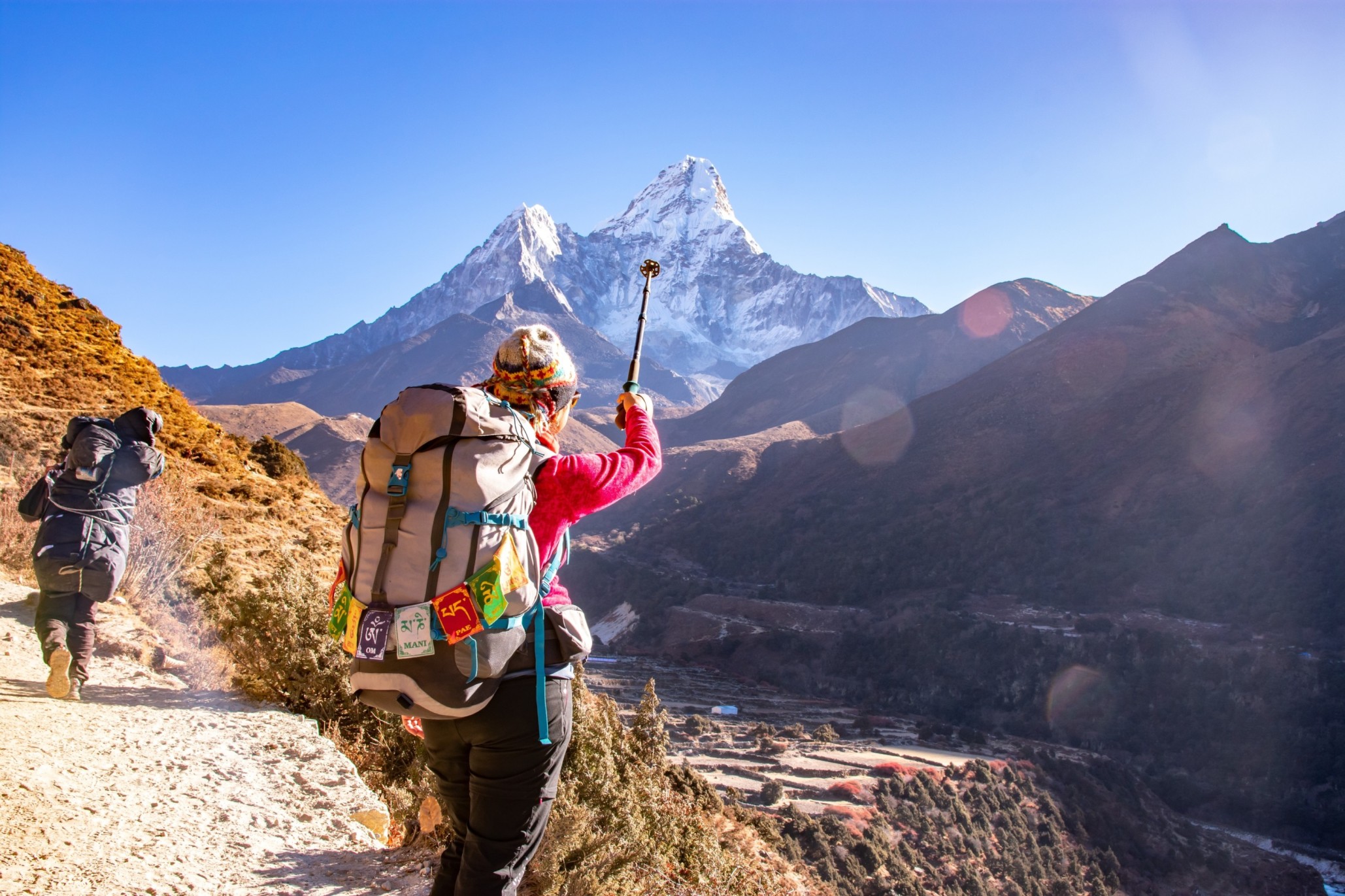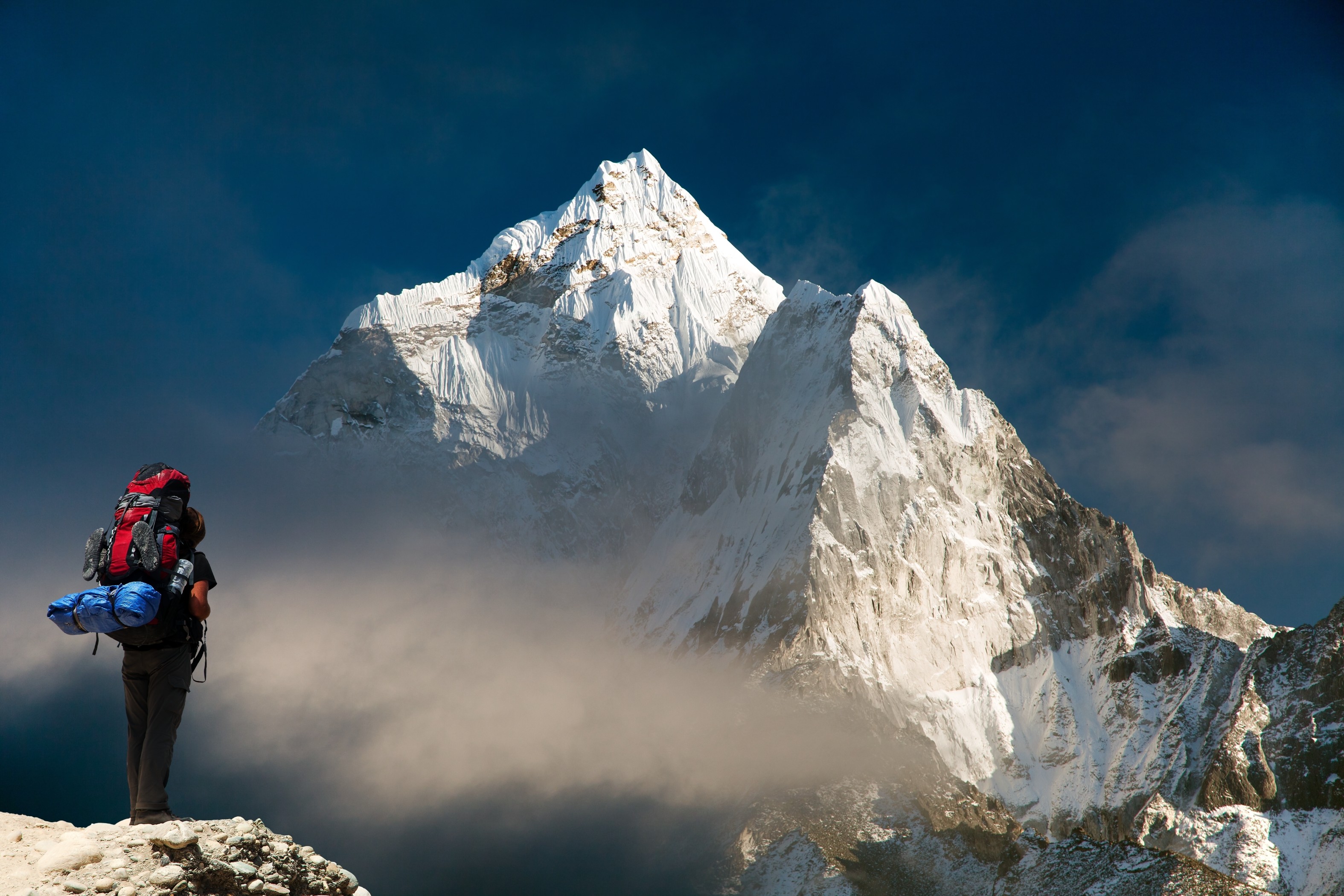Too Many Rescues on Ama Dablam This Season: What’s Happening?
Ama Dablam, often called the "Matterhorn of the Himalayas," is one of the most iconic peaks in Nepal. With its pyramid-like summit and cultural significance to the Sherpa people, it draws climbers from all over the world. However, this season, an alarming trend has emerged, an unusual number of rescues, especially at Camp 3, have sparked discussions about preparedness, risk assessment, and the evolving nature of mountaineering on this peak.
A Season Like No Other
In the heart of the Khumbu Valley, Ama Dablam (6,814 meters) is not as high as the 8,000-meter giants but is widely regarded as a technical and challenging climb. This year, climbers and guides have reported an extraordinary number of helicopter rescues, particularly from Camp 3, situated at approximately 6,300 meters.
Keep reading: How the Body Copes Above 8,000 Meters
A UK-based mountaineering guide, posted that in just two nights at Base Camp, four helicopter rescues had already taken place from the area of Camp 3. Other operators have confirmed the same pattern, with rescues becoming almost a daily occurrence. But what’s behind this troubling trend?
A Staging Ground with High Stakes
Camp 3, perched on a precarious ridge beneath Ama Dablam’s iconic hanging glacier (known as the “Dablam”), is the last stop before the summit push. While it offers breathtaking views, it also brings extreme challenges:
- Limited Space: The camp’s exposed position and small footprint make it difficult to accommodate climbers safely.
- Technical Climbing: Reaching Camp 3 involves steep, mixed rock and ice sections, suitable only for highly skilled mountaineers.
- Unforgiving Weather: Sudden storms, freezing temperatures, and avalanche risks amplify the dangers.
According to Nga Tenji Sherpa of The Summit Force, Camp 3 is inherently risky, even in ideal conditions. This season, those risks seem magnified as inexperienced climbers and poor acclimatization have led to repeated emergencies.
Why So Many Rescues?
Several factors contribute to the increasing number of rescues on Ama Dablam this season.
- Inexperience and Overconfidence
Ama Dablam attracts climbers from around the world due to its beauty, shorter climbing duration, and affordability compared to 8,000-meter peaks. However, its technical demands are often underestimated. Many climbers, lacking the necessary skills and preparation, push too high too fast. This lack of acclimatization can lead to Acute Mountain Sickness, frostbite, or even life-threatening conditions like High-Altitude Pulmonary Edema. - Helicopter Accessibility
The availability of high-altitude helicopter rescues changes climbers' decision-making.
As one anonymous climber observed, “If people are insured and airlift is covered by their policy, then it’s an easy decision to make.” The accessibility of helicopters at such altitudes may tempt climbers to take greater risks, knowing they can be rescued if things go south. - Insurance Policies
Many climbers rely on insurance policies that cover high-altitude rescues. However, these operations come at a cost—$18,000 or more for a single long-line rescue. Insurance may ease the financial burden for individuals, it puts significant strain on the insurance ecosystem, with some companies reconsidering their coverage for such climbs. - Crowding and Commercialization
This season, Nepal’s Department of Tourism issued 158 climbing permits for Ama Dablam, making it the second most popular post-monsoon peak after Manaslu. The crowding at high camps increases the risk of accidents, delays, and exposure, especially at the tightly packed Camp 3.


Ama Dablam’s Beauty and the Challenge
Ama Dablam’s magnetic appeal lies in its unique combination of cultural significance and natural beauty. Its name, meaning "Mother’s Necklace," reflects its hanging glacier, which resembles a traditional Sherpa pendant. For climbers, it’s a dream ascent—a mix of technical climbing, high-altitude exposure, and stunning views of the Khumbu Valley.
However, beneath its beauty lies a mountain that demands respect. Unlike peaks like Everest, Ama Dablam is typically climbed without supplemental oxygen, relying solely on proper acclimatization and fitness. The route’s fixed ropes and high-altitude camps make it accessible to seasoned climbers, but for those who underestimate its challenges, the consequences can be severe.
The Path to the Summit
- Base Camp (4,600 meters)
Situated on a picturesque plateau, Base Camp serves as the launchpad for climbers. Days here are spent acclimatizing, organizing gear, and preparing for the climb ahead. - Camp 1 (5,700 meters)
The route to Camp 1 involves crossing rocky moraine and grassy ridges. This stage is physically demanding but not overly technical. - Camp 2 (5,900 meters)
Camp 2, below the Dablam glacier, is a precarious and exposed site. Climbers face steep rock faces and avalanche-prone slopes, making this a dangerous section of the climb. - Camp 3 (6,300 meters)
As the highest camp, Camp 3 serves as the staging point for the summit push. This small, snow-covered ridge requires careful navigation and provides no room for error. - Summit (6,814 meters)
The final climb to the summit involves steep ice gullies and exposed ridges. Reaching the top the summit is a true struggle and challenge of one's skill, endurance, and determination.
Keep reading: Skills You Need to Gain Before Going on a Mountaineering Trip
Lessons from the Rescue Surge
The surge in rescues on Ama Dablam highlights several critical issues in modern mountaineering:
- The Need for Preparedness
Climbers must respect the technical and physical demands of the mountain. Proper training, acclimatization, and experience are non-negotiable. - The Role of Insurance
Insurance does provide a safety net, it may inadvertently encourage riskier behavior. Climbers should weigh the true costs—both financial and ethical—of relying on high-altitude rescues. - The Responsibility of Operators
Guiding companies must prioritize the safety of their clients, ensuring they are properly prepared for the challenges ahead. Encouraging slower acclimatization and enforcing strict fitness requirements can reduce the risk of emergencies.
Ama Dablam remains one of the most coveted climbs in the Himalayas. However, this season’s rescue numbers serve as a stark reminder that even the most beautiful mountains demand respect. As the climbing community reflects on these incidents, there’s an opportunity to foster a culture of preparedness, responsibility, and sustainability.
For climbers dreaming of Ama Dablam, the message is clear: Train hard, climb smart, and approach the mountain with humility. After all, the true triumph of mountaineering lies not just in reaching the summit but in making it back down safely.
Are you ready for the adventure of a lifetime? Explore guided expeditions on Expedreview and find the right team to help you tackle Ama Dablam or your next great challenge.



